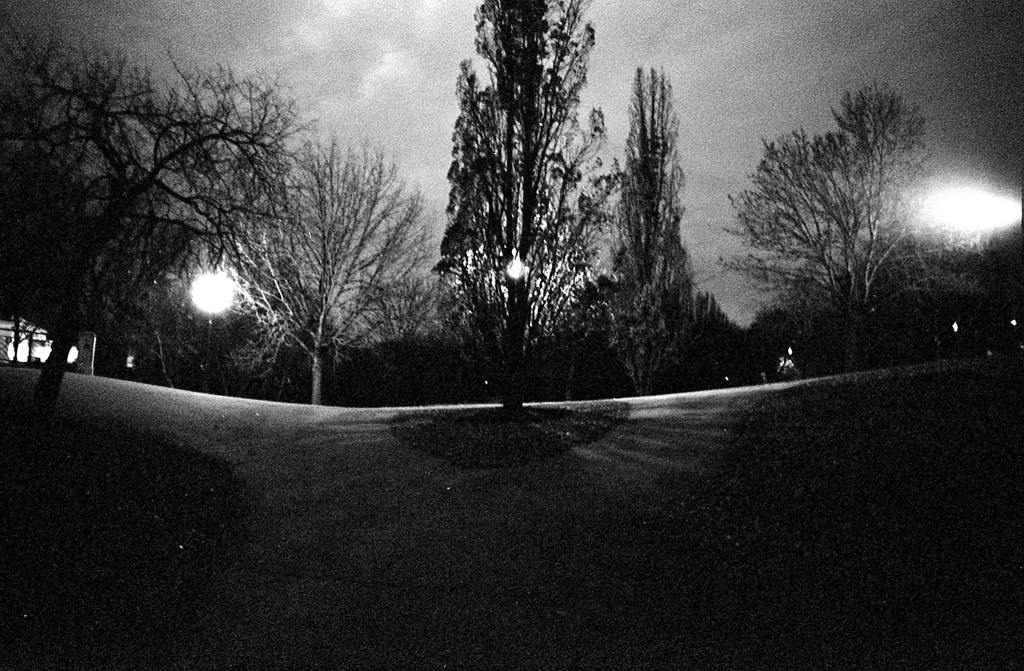I have enjoyed this thread immensely, but I want to complicate things for some of you at the risk of being didactic. So with my apology as a preface, here goes. "Film Noir" imagery is not about a B&W photograph simply having high key lighting. There are a couple of elements that come together, which have been hinted at by movies Peter cited in the first 2011 posts of this thread. Many of the shots in this thread reach for the aesthetic, but not all, and before the thread drifts further, I wanted to define some terms and explain this critique, which is not so much about me=right, you=wrong, but rather about the historical and social context of post war American cinema.
Film Noir generally refers to a post WWII American decent into moral ambiguity. It is specifically urban and tracks the rise of the Anti-Hero in modern American cinema. These antiheroes could be considered veterans of WWII who, despite having been part of the so-called Greatest Generation, no longer saw their own actions in terms of black and white, if you will pardon the pun. The Phillip Marlowe detective stories are a good example of this. Film Noir stands, historically, in stark contrast to the Western, which was a much more clear cut American morality play -- good guy, bad guy, good guy's girlfriend etc. The women of Film Noir were more morally ambiguous too by the codes of the day, and include some of the great "Bad Girls" of American cinema: Rita Hayworth, Lauren Bacall, Barbara Stanwyk, Lana Turner, Germaine Greer, etc. The lighting style in Film Noir movies was specifically chosen to highlight this, although a movie doesn't have to be in B&W to aspire to the genre. Ridley Scott's Blade Runner or Polanski's China Town, are perfect examples of modern versions of the genre and play off of the Maltese Falcon and other genre films of the late 1940's and early 1950's. The novels of James M. Cain (The Postman Always Rings Twice), Dasheill Hammet etc. were the inspiration here.
Movie examples of the genre (and all worth checking out) include: The Postman Always Rings Twice, Double Indemnity, The Big Sleep, The Maltese Falcon, The Lady In the Lake, Asphalt Jungle (Maralyn Monroe's debut in a minor role, and a gorgeously shot film), Gilda, Out of the Past, The Third Man, Touch of Evil, The Killers, Murder My Sweet, and so on. On the border of (and outside) the genre might be To Have and Have Not. Antihero? Check. But urban anxiety? Nope. Moral ambiguity? Nope. Great performances though (and Laurel Becall's debut).
I would posit that a certain amount of sexual/gender identity ambiguity was also part of the genre, although it is challenging somewhat to use the movies as an archeology of American gender history. But the relationship between Wilmer and the Fat Man (Sydney Greenstreet) in the Maltese Falcon, and the relationship between Johnny Farrel and Basil Mundson in Gilda are good examples of this. The relationships aren't named specifically as the directors and producers had to deal with the Hayes Code, but I would argue that in the context of the times it was probably clear to sophisticated audiences that gay male desire was being discussed, although not in a particularly flattering way.
Now having said all that, what isn't a Noir? Well there are excellent movies of the period that are shot in high key B&W, at least in part, that are not part of the genre. Hichcock's Rear Window (although filmed in Technicolor), or The Birds fall into this category, in my view.
I applaud the effort exhibited by so many in this thread to recreate the tone, or feel, of the movies in that genre. I look forward to many more evocative images as the thread progresses. The images that work for me above are the ones with a hint of despair, desperation or anxiety to them, but not ones that simply show a B&W image in a high key setting. I think the technical challenge with today's modern digital sensors is to see like the genre, as I'd argue that the liner response of most digital chips (as opposed to the S-curve response of panchromatic films) is actually "anti-Noir" . . . you have to fight your tools a bit with digital to produce the same kind of emotional response.









